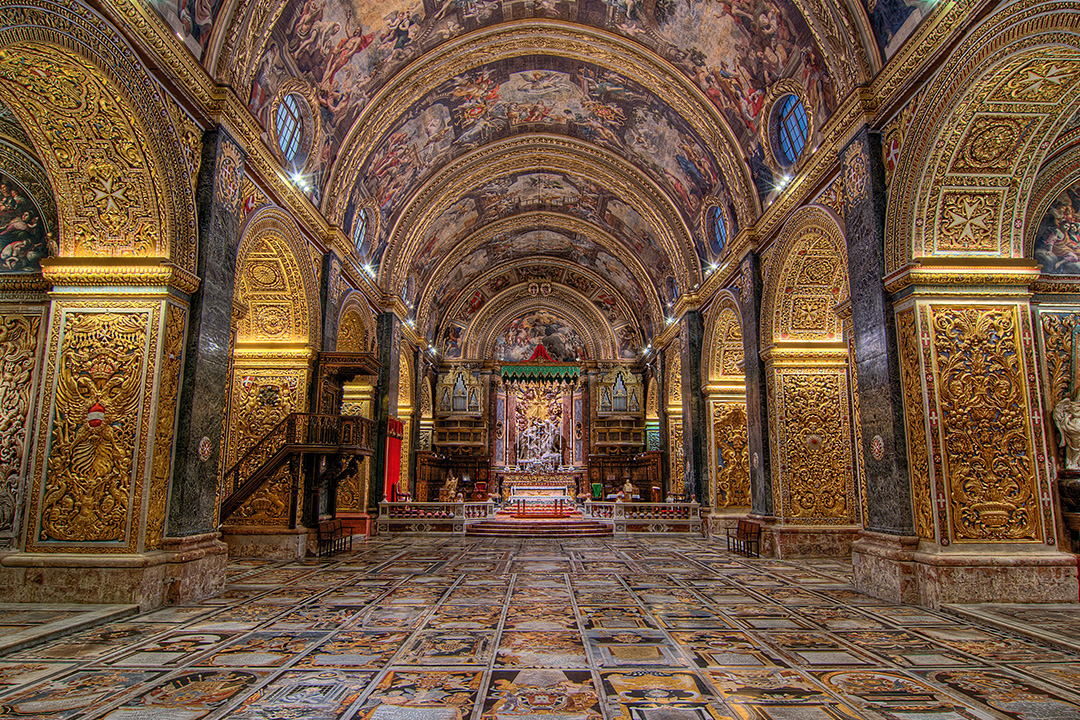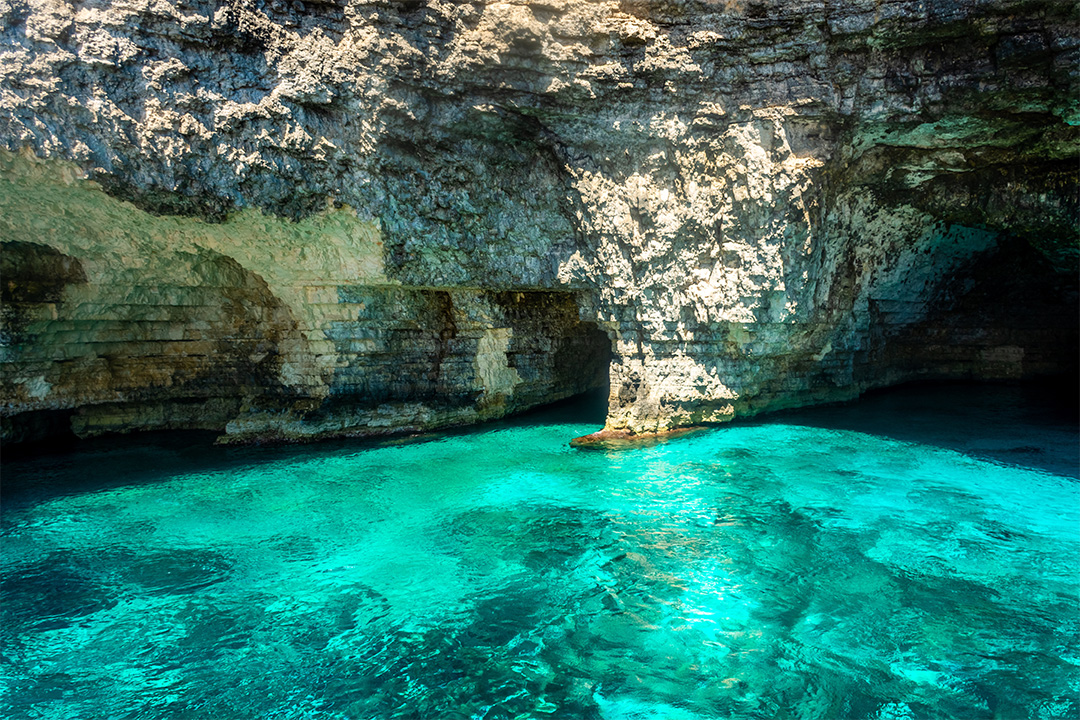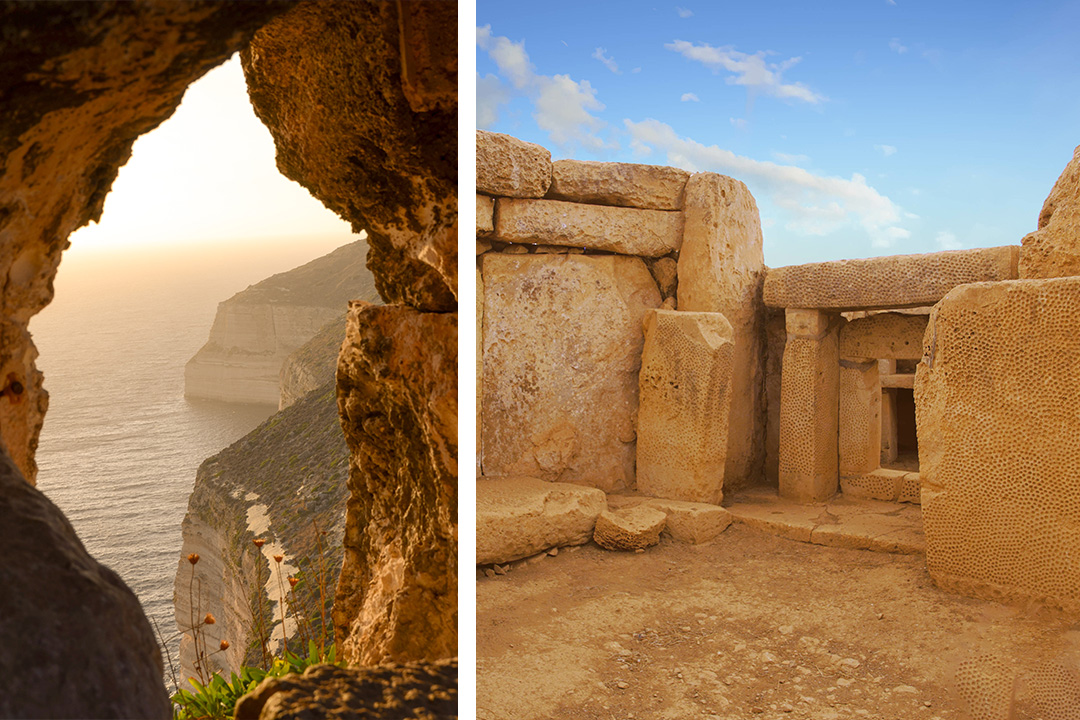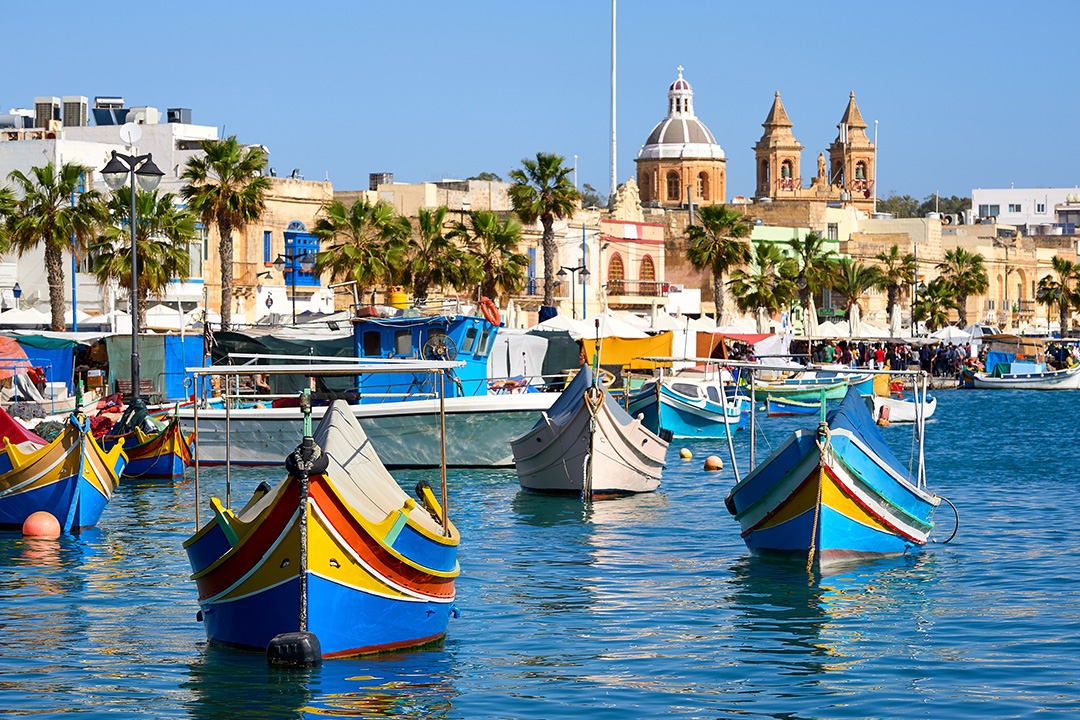In March 2025, a 4-day diplomatic trip to Malta will take place, organised by the former Ambassador of Malta and his partner. Diplomatisches Magazin visited the Maltese Islands with their unique historical heritage.
The Maltese islands mainly include Malta, Gozo, Comino and several smaller islands. Although Malta only has around half a million inhabitants, it has a very high population density, which is mainly located in and around Valetta. The size of Malta is roughly equivalent to the area of Bremen. The Maltese islands have a unique, historical cultural heritage due to their 7,000-year-old history, which was left behind by the Phoenicians, Romans and Arabs. Despite these influences of customs and traditions, the Maltese managed to preserve their own identity over many centuries. From 1530, it was under the rule of the sovereign Order of Malta, whose Maltese Cross has become the national symbol of the island state.

The name Malta dates back to the Bronze Age and has its origins in the colonisation of Mdina, the ancient capital of Malta, which was developed as a fortress by the Phoenicians and henceforth called Malet, the Phoenician-Punic term for ‘place of refuge’. In Roman times, the name changed to Melita and over time became Malta. Malta has two official languages: the official national language Maltese, a Semitic language with Latin characters that originated in Europe – and English.

When Valetta became the Capital of Culture in 2018, one of Malta’s most important museums was opened, the MUZA, which groups the exhibits into 4 main themes and uses many interactive elements. The building itself is also impressive – the Auberge d’Italie, the former seat of the Italian Knights of the Order of St John with a 500-year history. The building was recently meticulously restored to reveal historical layers.
In 1814, Malta became a British Crown Colony and thus an important strategic location. During the siege of Malta in 1941/42, the main island was affected by a massive supply shortage and non-stop air raids in which more than a thousand inhabitants died. For Malta’s role in the Second World War, the British King awarded the population the George Cross in 1942, which still adorns Malta’s national flag today. Malta gained independence as a parliamentary democracy in 1964, but remained a member of the Commonwealth of Nations. Since the proclamation of the Republic on 13 December 1974, the Head of the British Royal Family has no longer been Malta’s Head of State. Malta joined the European Union on 1 May 2004. On 1 January 2008, the euro replaced the Maltese lira as the official national currency.

Malta offers a lot of sights that are worth exploring. THE landmark of Valetta is undoubtedly the 16th century St John’s Co- Cathedral of the Order of Malta. From the outside, you would never guess what surprises the interior has to offer. The Grand Master’s Palace and Fort St Elmo are also well worth a visit. Many feature films, documentaries and commercials have been shot in Malta. Game of Thrones fans will find one of the locations of the hit series here. But even apart from Game of Thrones, the Mdina Gate (or Vilhena Gate) is a must-see in Malta. The gate is the main entrance to the fortified city. Behind it you will find medieval architecture: the Palazzo Costanzo and St Paul’s Cathedral as well as the Torre dello Standardo.
The rotunda of Mosta has a special history. When a German aerial bomb smashed through the dome during the Second World War, it did not explode and the more than 300 people who had sought shelter in the church were saved. The bomb was defused and can now be seen in the Military History Museum in Valetta.The bomber pilot later returned to Mosta to apologise to the local population for the mission.There was a big celebration and honours, because it is rare to experience something so unusual.

On the western side of Malta is a rocky limestone cliff with a unique view over the sea. At up to 250 metres, the Dingli Cliffs are the highest elevation on the island and take their name from the nearby town of Dingli. Rough rocks, small bays, small paths and a wide variety of birds – a perfect place for long walks and hikes in the midst of Maltese nature and one of the absolute highlights of Malta. A visit to the cliffs can also be perfectly combined with a visit to the Blue Grotto and Malta’s UNESCO temple complexes.

TThe island’s megalithic temple complexes, prehistoric temples, six of which are UNESCO World Heritage Sites, are very impressive. The temples are all around 5,000 years old and were built from limestone megaliths weighing several tonnes. If you fancy fresh fish, you should pop into Marsaxlokk. The colourful fishing boats in the harbour bring the fresh catch to the market and restaurants every day. The picturesque fishing village is popular with tourists and locals alike.
Malta has many surprises in store. Apart from the fact that it has the cleanest air in Europe, the climatic conditions are very pleasant. From the old town you can take the ferry to Sliema. There you will find luxurious hotels, bars and shops. In the harbour in between you can admire countless boats, often worth millions. Time and again you come across sights worth seeing while strolling around. Discover it for yourself. Air Malta even flies directly from BER to Valetta in summer

